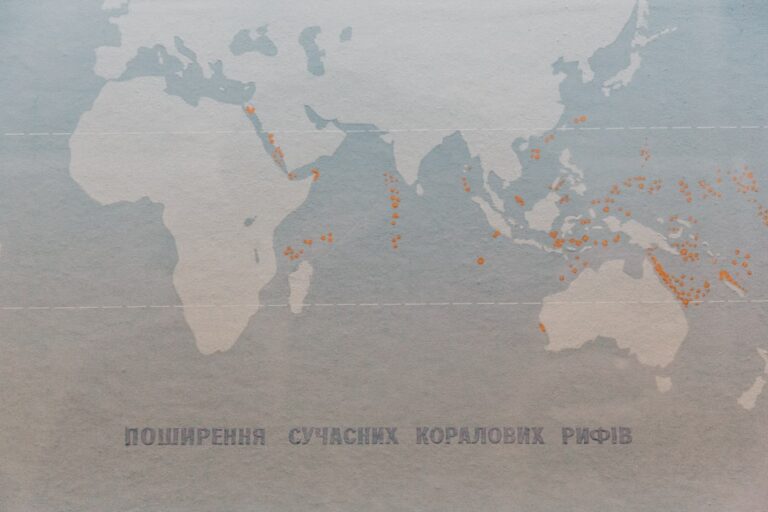Communication served as the backbone of early trade, facilitating the exchange of goods, services, and ideas among diverse cultures. In ancient societies, where barter was the primary means of transaction, effective communication was essential for establishing trust and understanding between traders. Merchants needed to convey not only the value of their goods but also their quality and origin.
This necessity for clear communication laid the groundwork for the development of more sophisticated trading practices. For instance, in Mesopotamia, traders would often engage in face-to-face negotiations, using verbal exchanges to discuss prices and terms. The ability to articulate one’s needs and intentions was crucial in a world where misunderstandings could lead to significant losses.
Moreover, communication in early trade extended beyond mere verbal exchanges. It encompassed a range of non-verbal cues, such as gestures and body language, which played a vital role in conveying messages. In many cultures, the act of trading was steeped in ritual and tradition, where specific gestures could signify agreement or disagreement.
For example, in some African tribes, the act of shaking hands was not just a greeting but also a formal acknowledgment of a trade agreement. This multifaceted approach to communication helped to build relationships and foster a sense of community among traders, which was essential for the sustainability of trade networks.
Key Takeaways
- Effective communication was crucial for successful early trade, allowing for the exchange of goods and information between different cultures and regions.
- Communication systems in early trade evolved from simple methods such as oral communication and gestures to more complex systems like written language and symbols.
- Language and writing played a significant role in early trade, enabling traders to record transactions, negotiate deals, and communicate across language barriers.
- Signals and symbols were used in early trade communication to convey messages, mark trade routes, and establish trade agreements.
- The development of communication systems had a profound impact on early trade routes, facilitating the expansion of trade networks and the exchange of goods and ideas between distant regions.
- The influence of technology on communication in early trade can be seen in the development of tools such as the abacus, compass, and early forms of writing and printing, which improved the efficiency and accuracy of trade communication.
The Evolution of Communication Systems in Early Trade
As societies evolved, so too did their communication systems, adapting to the growing complexity of trade networks. The transition from simple barter systems to more organized trade necessitated the development of standardized methods of communication. One significant advancement was the use of tokens in ancient Mesopotamia around 3500 BCE.
These small clay objects represented various commodities and were used to keep track of transactions. This early form of record-keeping marked a pivotal moment in the evolution of trade communication, as it allowed for more complex exchanges and the establishment of credit systems. The introduction of writing systems further revolutionized communication in trade.
The Sumerians developed cuneiform writing around 3200 BCE, which enabled them to document transactions on clay tablets. This innovation not only improved record-keeping but also facilitated long-distance trade by allowing merchants to send written instructions or contracts. For instance, a trader in Ur could send a tablet detailing an order for goods to a supplier in another city, ensuring that both parties had a clear understanding of the terms.
As writing systems spread across different cultures, such as hieroglyphics in Egypt and the Phoenician alphabet, they contributed to the establishment of more extensive trade networks that spanned vast geographical areas.
The Importance of Language and Writing in Early Trade

Language played a crucial role in early trade, serving as both a tool for negotiation and a means of establishing cultural connections. Different regions developed their own languages, which often reflected their unique trade practices and local commodities. For example, the emergence of trade languages or pidgins—simplified languages that developed as a means of communication between speakers of different native languages—was common in areas with diverse trading populations.
These languages facilitated interactions among traders from various backgrounds, allowing them to engage in commerce without needing to master each other’s languages fully. Writing systems further enhanced the importance of language in trade by providing a permanent record of transactions and agreements. The ability to document trades reduced the likelihood of disputes and misunderstandings, as both parties could refer back to written contracts if disagreements arose.
In ancient Rome, for instance, merchants utilized wax tablets to draft contracts that outlined the specifics of their transactions. This practice not only provided clarity but also established legal frameworks that governed trade practices. The significance of language and writing in early trade cannot be overstated; they were instrumental in fostering trust and accountability among traders.
The Use of Signals and Symbols in Early Trade Communication
In addition to verbal and written communication, early traders employed various signals and symbols to convey messages quickly and effectively. These non-verbal forms of communication were particularly useful in situations where language barriers existed or when traders needed to communicate over long distances without written records. For example, traders in ancient China used flags and banners to signal their presence and intentions during trade fairs.
Different colors and patterns conveyed specific meanings, allowing merchants to communicate vital information without uttering a word. Symbols also played a significant role in trade communication. In many cultures, specific symbols were associated with particular goods or services, serving as shorthand for complex ideas.
For instance, in ancient Egypt, hieroglyphs represented not only sounds but also concepts related to trade, such as abundance or scarcity.
The use of signals and symbols allowed traders to navigate complex social dynamics and facilitated smoother transactions by providing immediate visual cues that transcended linguistic barriers.
The Impact of Communication Systems on Early Trade Routes
The development of effective communication systems had a profound impact on the establishment and expansion of early trade routes. As merchants became more adept at communicating across cultures and regions, they were able to forge connections that spanned vast distances.
Merchants traveling this route relied on a network of informants who provided information about local customs, market conditions, and potential risks along the way. This exchange of information was crucial for navigating the diverse landscapes and cultures encountered on the journey. Furthermore, improved communication systems allowed for the establishment of trading posts and hubs along these routes.
Cities such as Samarkand and Constantinople became vital centers for commerce due to their strategic locations and the flow of information that passed through them. Traders could share knowledge about goods available in different regions, leading to increased demand for exotic products like silk, spices, and precious metals. The ability to communicate effectively not only enhanced individual trading ventures but also contributed to the overall economic growth of civilizations by fostering interconnectivity among disparate regions.
The Influence of Technology on Communication in Early Trade

Technological advancements played a pivotal role in shaping communication methods within early trade contexts. The invention of the wheel around 3500 BCE revolutionized transportation, enabling merchants to move goods more efficiently across land routes. This innovation necessitated improved communication methods to coordinate logistics and manage supply chains effectively.
As traders began using wheeled carts for transport, they needed to communicate schedules and routes clearly to ensure timely deliveries. The advent of maritime technology also transformed trade communication significantly. The development of ships capable of navigating open waters allowed for long-distance maritime trade routes that connected distant civilizations.
Navigational tools such as compasses and astrolabes improved sailors’ ability to traverse vast oceans while maintaining contact with coastal trading partners. As maritime trade flourished, so did the need for effective communication between ship crews and port authorities regarding cargo handling, customs regulations, and safety protocols. In conclusion, the interplay between communication systems and early trade is a rich tapestry woven from various threads—language, writing, symbols, technology—all contributing to the intricate web that facilitated commerce across cultures and continents.
Each advancement built upon previous innovations, creating an ever-evolving landscape that shaped human interaction through trade for millennia.
In exploring the evolution of communication systems in early trade, it is essential to consider the broader societal context in which these systems developed. A related article that delves into the intricate relationship between society and education, which serves as a key driver of development, can provide valuable insights. You can read more about this connection in the article titled “The Relationship Between Society and Education: A Key Driver of Development” available at this link.
FAQs
What were the early communication systems used in trade?
Early communication systems used in trade included the use of messengers, smoke signals, drums, flags, and carrier pigeons. These methods were used to convey messages over long distances.
How did messengers play a role in early trade communication?
Messengers were an important part of early trade communication as they were responsible for delivering messages and important information between traders and merchants. They traveled long distances on foot or horseback to ensure the timely exchange of information.
What role did smoke signals and drums play in early trade communication?
Smoke signals and drums were used as a form of long-distance communication in early trade. They were used to convey simple messages over large distances, especially in areas where visual or auditory signals could be easily seen or heard.
How were flags used in early trade communication?
Flags were used as a visual communication tool in early trade. Traders and merchants used flags to signal their presence, convey messages, or indicate their intentions to other parties involved in trade.
What was the significance of carrier pigeons in early trade communication?
Carrier pigeons were used to carry written messages over long distances in early trade. They were trained to fly back to their home location after being released, making them an effective means of communication between distant trading partners.





















+ There are no comments
Add yours